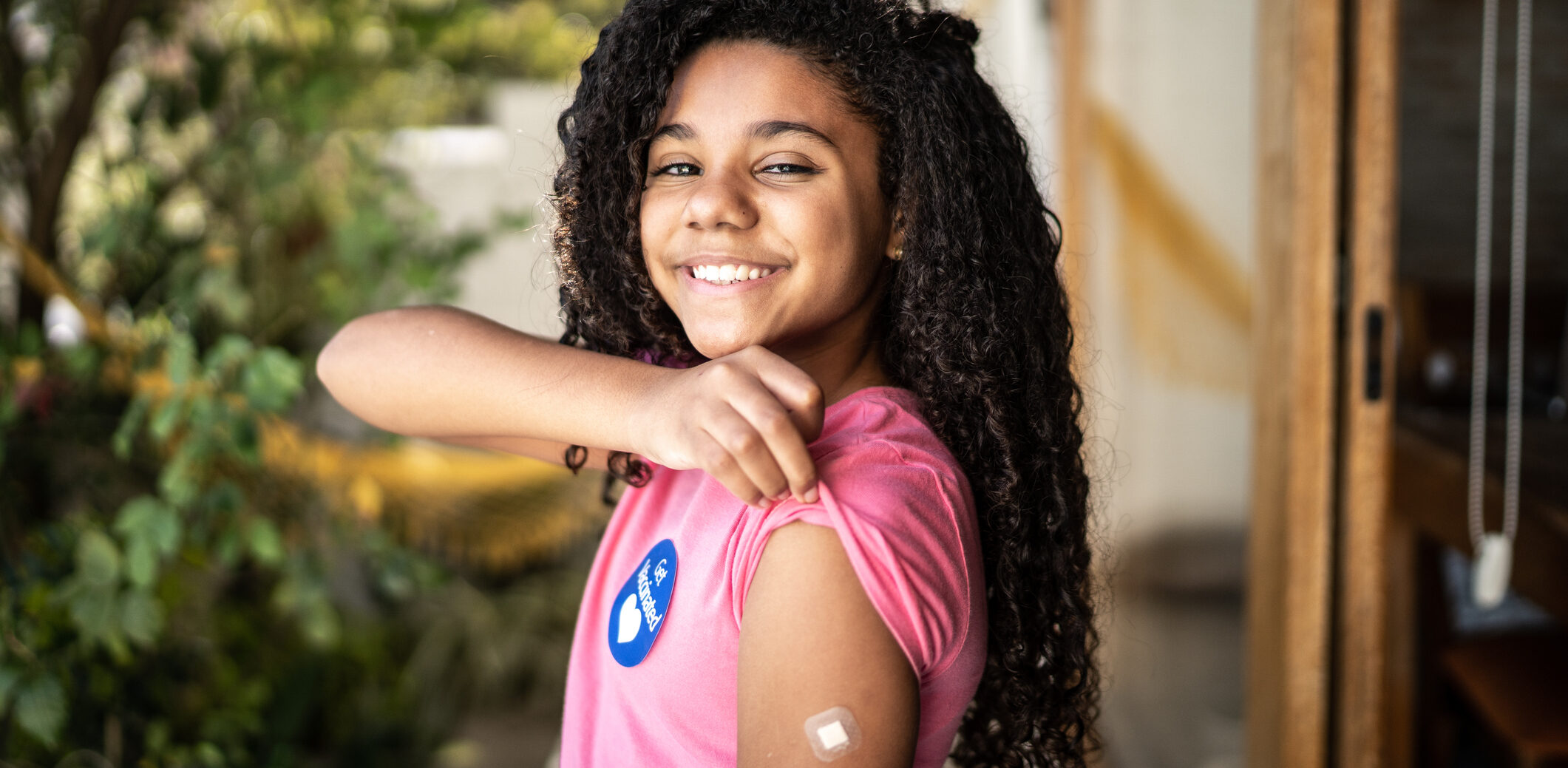
By
NYHealth
Funding Area
Other
Date
March 16, 2022
DOWNLOAD
The human papillomavirus (HPV) is the single most common sexually transmitted infection; from 2013–2017, an average of 2,730 New Yorkers were diagnosed with an HPV-related cancer each year.
The HPV vaccine prevents the development of more than 90% of these cancers, making it one of only two vaccines that prevent cancer. The Centers for Disease Control and Prevention recommends that adolescents receive two doses of the HPV vaccine when they are ages 11–12 years.
This report examines HPV vaccination coverage in New York State from 2018–2020. Vaccination coverage refers to the percentage of 13-year-olds who completed the two-dose HPV vaccine series by the age of 13. Data on adolescent vaccination were made available through the New York State Immunization Information System and represent trends for the 57 counties outside of New York City. The report presents differences in vaccination coverage by gender, race/ethnicity, and geography.
New York State has made notable gains in improving vaccination rates, although most regions are still not meeting the State’s targets for HPV vaccinations. Factors that may have increased HPV vaccination coverage over time include strong provider recommendation, the advancement of electronic health records, and the integration of HPV vaccination into school-based health centers. To further increase vaccination rates, New York State could consider additional policies, including requiring the HPV vaccine for school attendance and studying the potential of pharmacists to administer the HPV vaccine.
Key Findings:
- Overall adolescent HPV vaccination coverage increased in New York State (all data are exclusive of New York City) from 2018 to 2020. In 2020, 24.5% of 13-year-olds had received both shots of the HPV vaccine series by age 13. By comparison, 20.1% of similarly aged adolescents completed the HPV vaccine series by age 13 in 2018.
- Contrary to trends for many other vaccinations, Hispanic or Latino and Black or African-American adolescents had the highest rates of HPV vaccination coverage over the study period. The coverage rate increased for all races and ethnicities from 2018–2020 but remained consistently lower for Asian and white adolescents.
- Both girls and boys experienced an increase in HPV vaccination coverage over the study period. While the gap between genders decreased slightly over time, a difference of 2.5 percentage points in vaccination coverage remained between 13-year-old girls (25.9%) and boys (23.4%) in 2020.
- There was substantial variation in HPV vaccination coverage across counties in New York State, with only two counties (Cortland and Niagara) meeting the State’s Prevention Agenda goal of 37.4% coverage among 13-year-olds by 2024. The 2020 coverage rate in the county with the lowest rate, Jefferson, was less than one-quarter as high as the county with the highest rate, Cortland (9.9% compared with 40.8%).
- The lowest regional rates of HPV vaccination coverage were consistently found in the Lower Hudson and Long Island regions (in 2020, 20.5% and 20.9%, respectively). These regions also had the lowest vaccination coverage for other pediatric vaccinations, studied in an earlier NYHealth report here.


